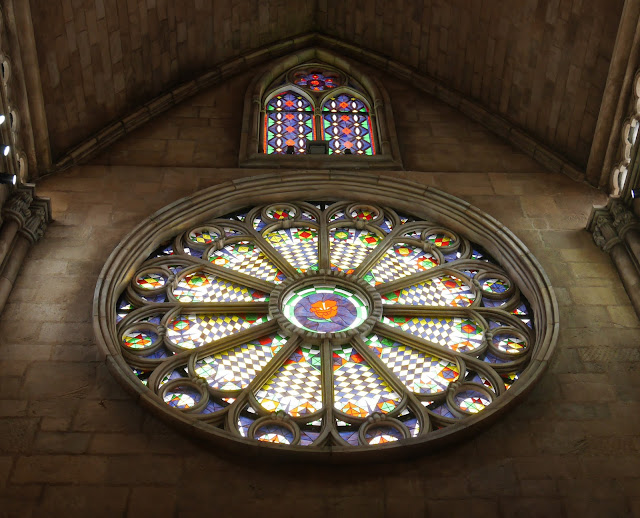The Martyr's Crypt and Ruins of St. Paul's Church, Macau, China
 |
| The Ruins of St. Paul's Church, Macau, China |
A 16th Century Jesuit ruin sits above the crypt of Japan's most famous martyrs
The Ruins of St. Paul's Church in Macau is a bit different than the sites that I normally write about on this blog. As the name suggests, St. Paul's Church is a ruin, destroyed by a rather Biblical typhoon in 1830 leaving the impressive facade somewhat miraculously standing.
Macau, a tiny little peninsula on the southeastern tip of China, was a Portuguese colony from the 15th century until its return to China in 1999. For nearly half a millennium, Macau was the seat of power for the Catholic Church in Asia and one of the most important religious and political cities in the world.
Today, though once again legally a part of China, Macau enjoys a degree of autonomy. Macau issues its own postage and currency. It has its own immigration requirements that are separate from that of the rest of China. Although no longer a European colony, vestiges of 500 years of Portuguese rule can be seen all over the city, from the architecture to the street names.
 |
| street signs in Macau are still printed in both Chinese and Portuguese |
St. Paul's Church was, at the time of its construction, the largest church in all of Asia. It was constructed by Portuguese Jesuit priests in the 16th century, designed by a prominent Italian architect, and built by exiled Japanese Christians who had fled persecution in their homeland to the Roman Catholic stronghold of Macau.
In 1835, a terrible storm struck the city, destroying most of the church. Only the facade was left standing. The structure quickly became an icon and symbol of the city, and even today is Macau's most famous landmark. If you visit Macau today, have a look at their money; the Ruins of St. Paul's appears on the 5 pataca coin as well as the 20 pataca note.
Of course, I couldn't visit Macau without checking out this amazing historical landmark.
 |
| the Ruins of St. Paul's Church is a symbol of Macau, and dates back some 500 years |
It was crowded in the plaza in front of the ruins, as it often is. All of the visitors, it seemed, only wanted to take a photograph of the church's facade however, and as soon as I passed beneath the arches, I was nearly alone.
It doesn't cost anything to visit the ruins, but even more impressive than the grand facade that still stands atop one of the tallest hills in old town Macau is the museum that lies beneath.
Beneath the ruins of the church lies a crypt. It was built hundreds of years ago, but lost to time until preservation efforts during the 1990s uncovered it once again. The crypt holds the relics of several 16th century Japanese Catholic martyrs as well as important Portuguese Jesuit missionaries who were based out of Macau. As I climbed down the steps into the cool dark chamber, the complete silence was broken only by the soft sounds of recorded Gregorian chant that played through the crypt.
 |
| looking up at the grand facade of the Ruins of St. Paul's |
In Japan, Christianity was outlawed and persecuted by the Shogunate in the late 14th century. The religion had arrived in Japan with Portuguese merchants, and was seen as a threat to the Shogun and the Emperor. Shinto, the state religion of Japan, emphasized the Emperor as the "Son of Heaven", and a religion that threatens that status quo was seen as dangerous. The Kakure Kirishitan, or "Secret Christians", were forced underground, hiding their beliefs.
 |
| structural supports help preserve St. Paul's in Macau |
Most famous of these were the "26 Martyrs of Japan", twenty-six foreign and Japanese Jesuits and Franciscans who were executed by crucifixion in Nagasaki in 1597. All have since been canonized by the Catholic Church. Their remains were interred in a place of high honor beneath St. Paul's in Macau, once the mother church of Catholicism in Asia.
 |
| the crypt beneath the Ruins of St. Paul's in Macau |
Visiting St. Paul's and the Martyr's Crypt in Macau
The Ruins of St. Paul's are located in the center of Macau's Old Town area just next to the Macau Museum and Monte de Forto.
The museum and crypt are free to visit, and are open daily from 9:00 - 18:00.



.JPG)

Comments
Post a Comment